Culture and Heritage
-
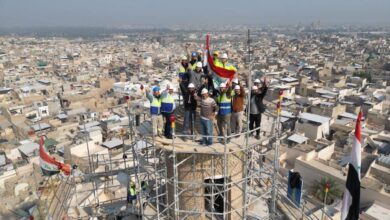
The Hadba Minaret Adorns the Skies of Mosul Once Again
The historic Hadba Minaret, a symbol of Mosul’s rich cultural heritage, once again graces the city’s skyline, standing as a testament to resilience and rebirth. Under the patronage of the Minister of Culture, Tourism and Antiquities, Professor Dr Ahmed Fakak Al-Badrani, alongside the supervision of the Head of the General…
Watch -

The Wall: Women’s Rights on Iraq’s Theatre Stage
The play The Wall, currently showing at Al-Rasheed Theater in Baghdad, has captured significant attention as a landmark event in Iraqi theater, both for its scale and the depth of its message. Directed by Dr. Sinan Al-Azzawi and written by Haider Juma, the play features over seventy Iraqi artists, including…
Watch -
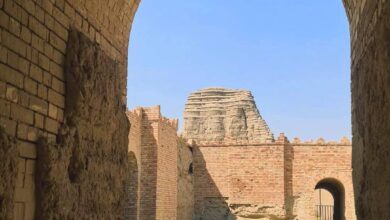
Historic Ziggurat Restoration for Baghdad Tourism Celebration
The historic Aqargouf Ziggurat is set to be revitalised as part of Baghdad’s preparations to serve as the Arab Tourism Capital in 2025. Following the recommendations of the Baghdad Capital of Arab Tourism Committee, established under Diwani Order No. 24638, a series of cultural initiatives have been launched to enhance…
Watch -
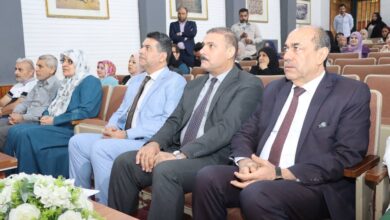
Workshop on Austrian Excavations at Bursiba Site
On Thursday October 24, a workshop focused on archaeological excavations was held at the General Authority for Antiquities and Heritage, under the supervision of the Undersecretary of the Ministry of Culture, Tourism and Antiquities for Arts Affairs and the Director General of the Department of Studies, Research, and Archaeological Training,…
Watch -
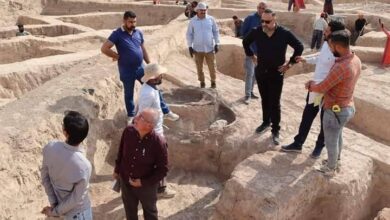
4,000-Year-Old Archaeological Site Discovered in Kirkuk
The General Authority for Antiquities and Heritage has announced the discovery of a significant archaeological site at Tell “Arab Kombet” in Kirkuk province. The site, estimated to be over 4,000 years old, dates back to historical periods spanning from the Early Dynastic Period to the Old Babylonian Period (third and…
Watch -

House of Books Announces Iraq’s Digital Library Project Nears Completion
The Director General of the House of Books and Documents, Mr. Bareq Raad Alawi, has confirmed that the completion of the Digital Library Project is approaching, describing it as a crucial national initiative aimed at preserving Iraq’s rich cultural heritage. As part of its ongoing efforts to implement a comprehensive…
Watch -
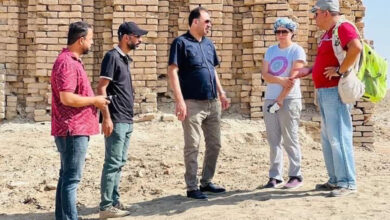
Restoration Begins on World’s First Court of Justice in Ancient City of Ur
The General Authority for Antiquities and Heritage in Dhi Qar has officially commenced the restoration of the Dub Lal-Mah Temple, widely regarded as the first court of justice in human history. This significant restoration effort is being carried out under the directives of His Excellency, Dr. Ahmed Fakak Al-Badrani, Minister…
Watch -
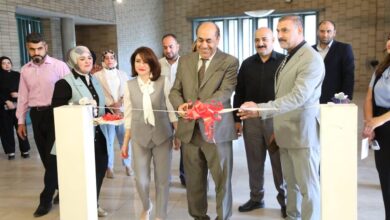
Seminar Highlights Importance of Archaeological Laws
Under the patronage of His Excellency Dr. Ahmed Fakak Al-Badrani, Minister of Culture, Tourism and Antiquities, the General Authority for Antiquities and Heritage convened a seminar titled “Archaeological Laws: Protection and Contribution through the Essence of Documents” today. This significant event marked Arab Document Day and attracted key figures in…
Watch -

Iraq and Tunisia Strengthen Arab Cultural Ties
Dr. Ahmed Fakak Al-Badrani, Iraq’s Minister of Culture, Tourism, and Antiquities, has arrived in Tunis, Tunisia, leading a high-level ministerial delegation. The delegation included prominent figures such as Dr. Fadhel Mohammed Hussein, Undersecretary for Cultural Affairs, Mr. Ali Obaid Shalgam, Chairman of the Antiquities Authority, and Dr. Alaa Abu Al-Hassan…
Watch -

Historic Babylon Lake Revived: Minister Announces Plans for a Landmark Museum
In a monumental step towards preserving Iraq’s rich heritage, the ancient city of Babylon witnessed the revival of its iconic lake today. The inauguration ceremony, led by Minister of Culture, Tourism, and Antiquities Dr. Ahmed Fakak Al-Badrani, and Minister of Water Resources Eng. Aoun Diab, marked the completion of cutting-edge…
Watch
